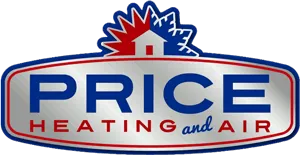Troubleshooting Your Furnace: Tips from HVAC Experts

TL;DR: Learn how to troubleshoot common furnace issues like starting problems, uneven heating, and strange noises. Regular maintenance and professional help, like from Price Heating and Air, ensure your furnace runs smoothly, keeping your home cozy during winter.
Welcome to our guide on troubleshooting your furnace, where we offer expert insights to help you navigate common heating issues like a pro. Your furnace is the unsung hero of your home, quietly keeping you warm during the chilly months. However, like any mechanical system, it can encounter problems that require attention. Whether you’re dealing with strange noises, poor airflow, or other issues, we’ve got you covered.
At Price Heating and Air, we understand the importance of a well-functioning furnace for your comfort and safety. With years of experience in the HVAC industry, we’ve seen it all. In this guide, we’ll walk you through some common furnace problems and provide practical tips for troubleshooting them. Let’s dive in!
Table of Contents
ToggleIdentifying Common Furnace Problems
One of the first steps in troubleshooting your furnace is identifying the problem at hand. Here are some common issues you might encounter:
- Failure to Start: If your furnace isn’t turning on, check the thermostat settings, power supply, and circuit breaker to ensure everything is in order.
- Uneven Heating: If certain rooms in your home feel colder than others, there could be issues with airflow or ductwork.
- Strange Odors: Foul or unusual odors coming from your furnace could indicate a variety of problems, from a dirty air filter to a gas leak. It’s essential to address these issues promptly for safety reasons.
Assessing Airflow: Ducts and Vents Inspection
Proper airflow is crucial for efficient heating. Here’s how you can assess and improve airflow in your home:
- Inspect Ductwork: Check for any visible signs of damage or blockages in your ductwork. Leaks or obstructions can hinder airflow and reduce the efficiency of your furnace.
- Clean Air Vents: Dust and debris can accumulate in air vents over time, obstructing airflow. Regularly vacuuming or dusting your vents can help maintain optimal airflow throughout your home.
- Consider Duct Cleaning: If your ducts are excessively dirty or clogged, professional duct cleaning may be necessary to improve airflow and indoor air quality.
Detecting Strange Noises: What Your Furnace Is Telling You
Strange noises coming from your furnace can be a cause for concern. Here are some common noises and their possible causes:
- Rattling or Banging: Loose or broken components within the furnace, such as blower wheels or heat exchangers, can cause rattling or banging noises.
- Squealing or Screeching: These noises often indicate issues with belts or bearings within the furnace motor. It’s essential to address these issues promptly to prevent further damage.
- Booming or Popping: Delayed ignition or buildup of gas within the furnace can cause booming or popping noises. This can be a serious safety hazard and should be addressed immediately by a professional.
Final Thoughts
Your furnace plays a vital role in keeping your home comfortable, especially during the colder months. By familiarizing yourself with common furnace problems and troubleshooting techniques, you can ensure that your heating system remains efficient and reliable.
If you encounter any issues beyond your expertise or feel unsure about handling furnace repairs, don’t hesitate to contact the professionals at Price Heating and Air. Our team of experienced HVAC technicians is here to help diagnose and resolve any furnace problems you may encounter. Stay warm and comfortable all winter long with Price Heating and Air by your side!
FAQ’s
How often should I replace my furnace filter?
It’s recommended to replace your furnace filter every 1 to 3 months, depending on factors like filter type, household size, and air quality. Regular filter changes help maintain efficient airflow and improve indoor air quality.
Why is my furnace blowing cold air?
Several factors could cause your furnace to blow cold air, including a malfunctioning thermostat, a dirty air filter, or a faulty pilot light or ignition system. It’s best to check these components first, and if issues persist, consult a professional HVAC technician for further diagnosis and repair.
How can I improve the efficiency of my furnace?
To improve furnace efficiency, start by scheduling regular maintenance, including cleaning or replacing air filters, inspecting ductwork for leaks or blockages, and lubricating moving parts. Additionally, consider upgrading to a programmable thermostat and ensuring proper insulation and sealing in your home to minimize heat loss.
